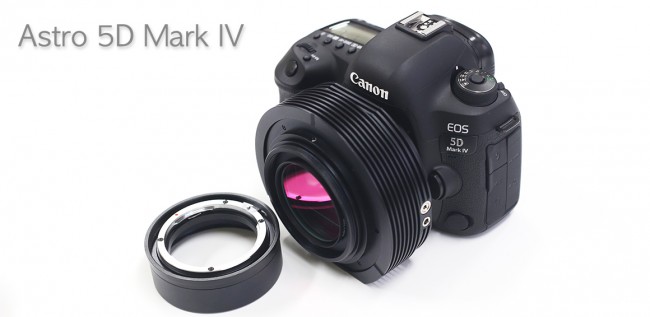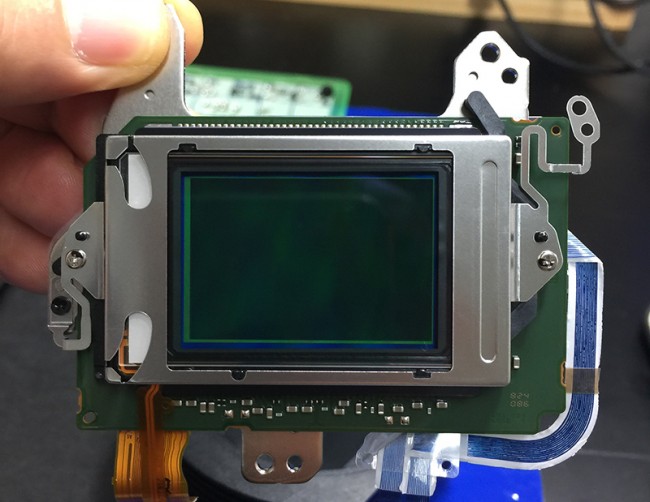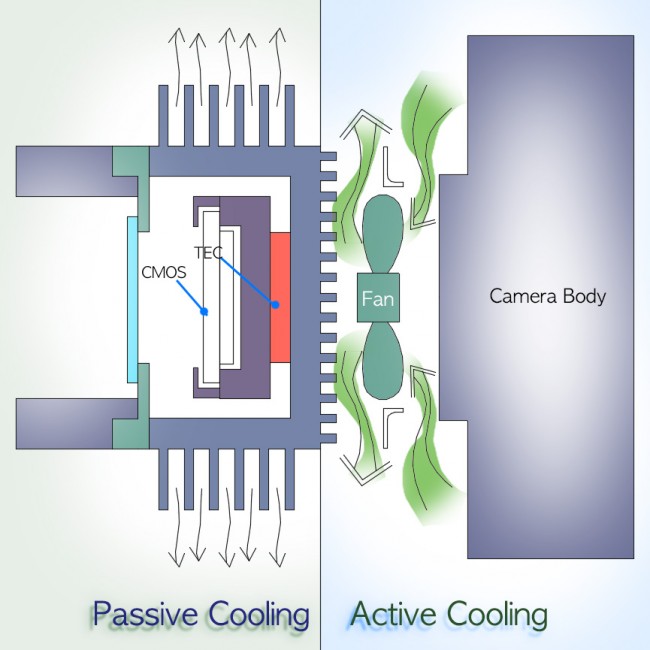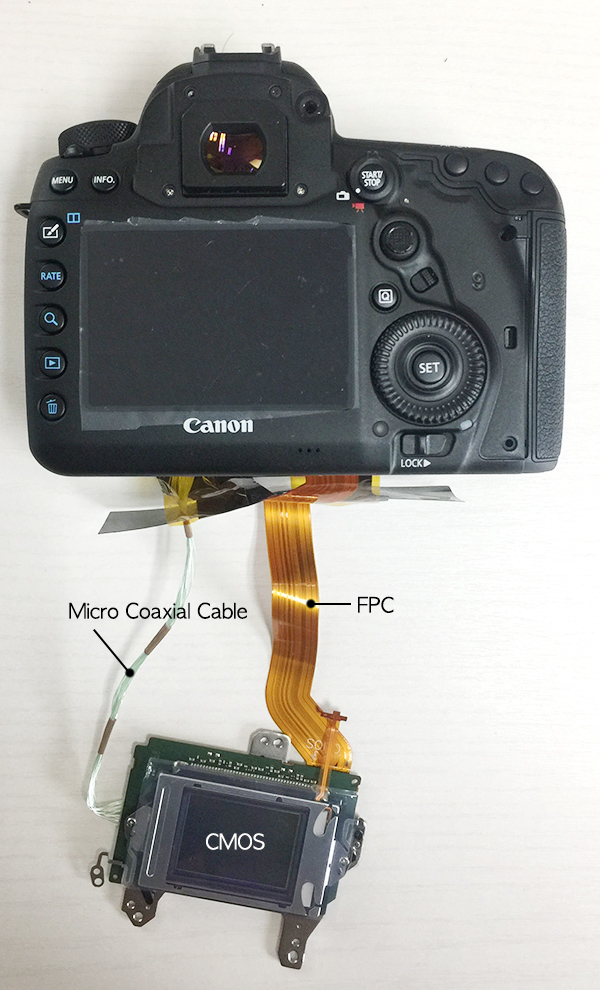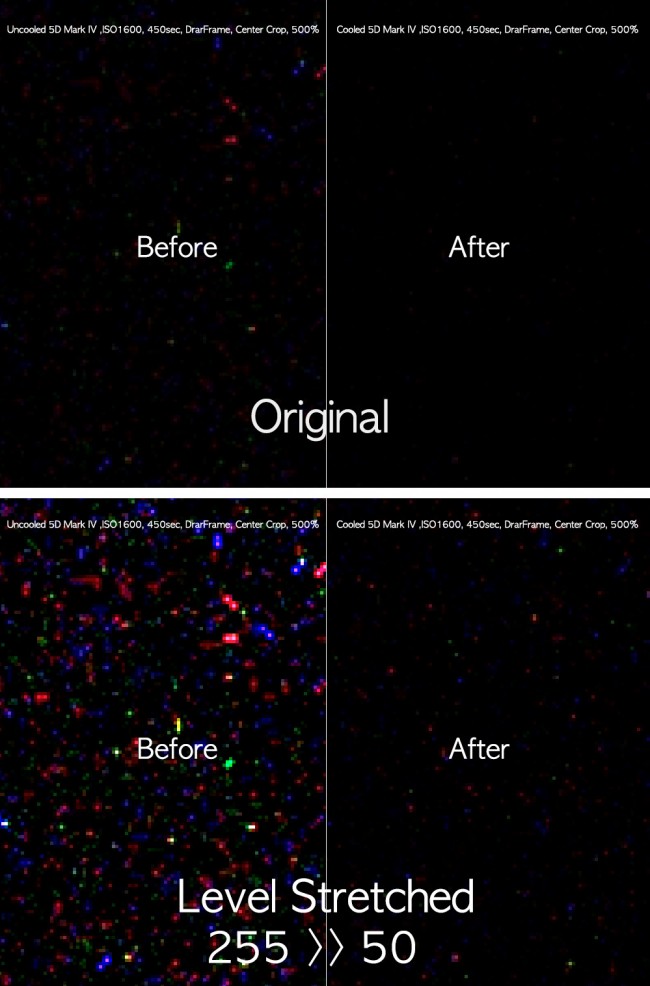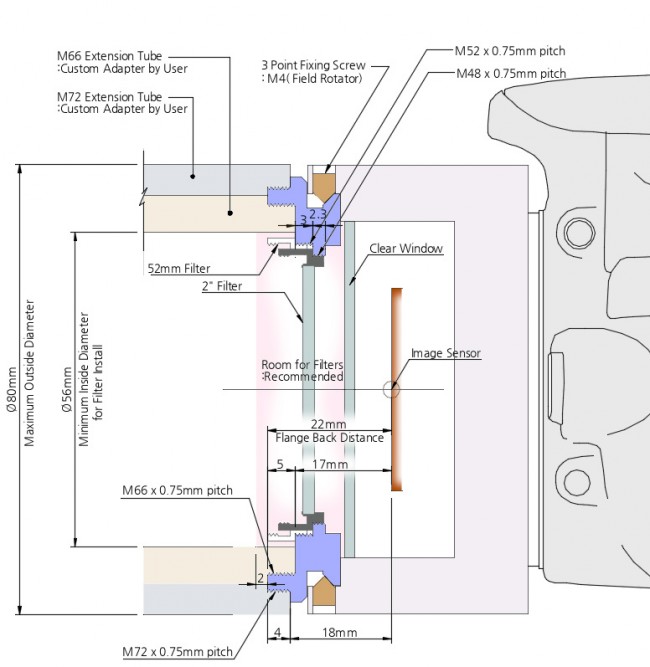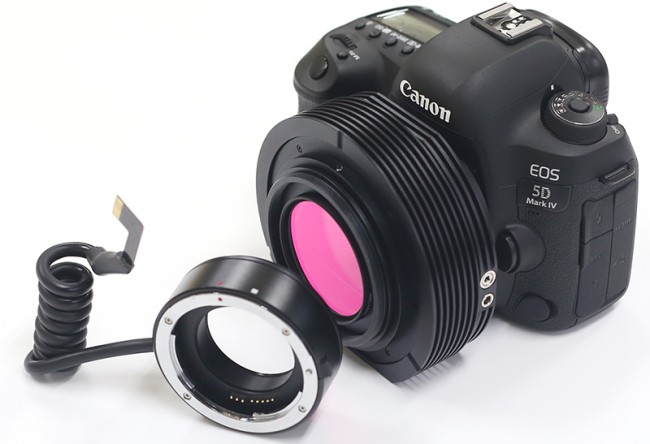Astro 5D Mark IV (Cooled 5D Mark IV)
At last, we launched cooled 5D Mark IV.
New Image Sensor
Recently the was a big development in Canon’s CMOS technology.
That is moved A/D converter into CMOS wafer (= On-chip ADC).
This jumped technology make possible to reduce dramatically Read Noise when the light signal is changed to electric signal. This is very helpful for low light photography such as astro imaging field and it make possible to separate the low signal from the background noise.
We can see the changed background noise pattern and can’t find any ‘banding noise’ the old issue of canon DSLRs.
Hybrid Cooling
Since Astro 6D, we used active cooling method by 2 fans of EXcooler.
Astro 5D Mark IV inherited the concept of Astro 6D in cooling module and heatsink design. But instead of EXcooler, we added a fan on hot side of TEC.
In Astro 5D mark IV , Heatsink on outer housing perform passive cooling to ambient air. And the fan on the rear side of TEC perform active cooling.
For efficient active cooling we added heatsink on back side and wind guide wall.
Therefore we can reduce the weight of camera and made small and simple cooled camera with high cooling performance.
Permanent Anti-Dew System
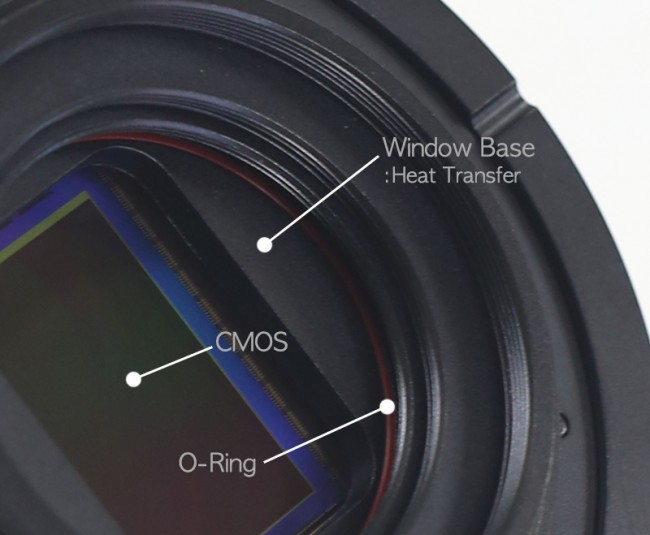
The Housing of cooling module of Astro 5D Mark IV is functioning as heatsink for heat radiation of Peltier element and it’s temperature is higher than that of ambient air.This housing deliver the heat to Clear Window in front of CMOS and make it warm.
Therefore it make Anti-Dew condition of window.The temperature of CMOS serface is very low and need more special Anti-Dew solution.First we made a airtight chamber with O-ring and blocked inflow of vapor into cooling module.And we prepared cold block with large surface area at cold surface on TEC.
CMOS is surrounding this cold block and cool down by the conduction from it.The surface of cold block captures vapor molecule more earlier than that of CMOS and this method prevent the dew condensation on CMOS surface.
As a result, permanent Anti-dew system is completed without any desiccants.
RELOCATION OF IMAGE SENSOR
We took out CMOS and moved it towards the lens and made a cooling module.
We had questions about the reliability of the extended CMOS connection cable and decided to test it.Before we performed the tests, we strengthened the ground circuit and made a heat sink and cold block to unite to the camera’s ground circuit and made shield covers.With the extended cable the camera worked well without any errors in still shot photography and in movie mode.
We guess that the CMOS cable delivers only digital signals. The lines are composed with pairs and the additional ground and shield has helped the stability of the circuit.
The relocation of the image sensor out of the body has merits and demerits.
First, the mechanical shutter is made redundant because the CMOS has been moved in front of the shutter.Canon DSLR’s control the amount of light to the sensor by a combination of the mechanical and the electronic shutters.
The exposure time of modified 5D Mark IV will be controlled only by the electronic shutter which means exposure control of sub second exposures is not reliable.
Second is the fact that you are no longer able to use the optical viewfinder. However you can focus using the Live View mode.
But CMOS relocation give us extra space for drop-in filter system.
Drop-In filter System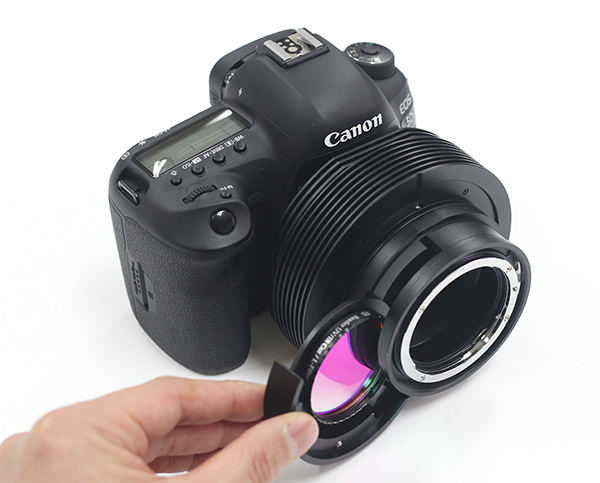
The back focus distance between the image sensor and lens mount allowed room for the drop in filter holder. This system makes it possible to install filters without removing the lens. This is very useful including for narrowband imaging.
With a filter(2mm thickness) in Drop-In Filter Holder, the Flange Back Distance of Astro 5D Mark IV lens Mount is 44mm, it’s same as the Canon EF/ EF-S mount.
BulB Timer / Interval Timer

There are two new useful functions [ interval timer / Bulb Timer] in 5D Mark IV menu setting. [Interval timer] can work with 30sec under exposure time except Build mode, it can control number of shots and interval time of each shots.
[Bulb Timer] can set the exposure time in Bulb mode, this make shooting of astro photo without any external release.
Upgraded Noise Reduction
Highly intensive electric parts in digital cameras cause electric noise. Canon engineers installed many metal shield cover, EMI tapes etc on the PCB parts to guard image sensor from these noise source and can see the faithful Ground circuit design.
CMOS of Astro 5D Mark IV is isolated from the camera body and it’ free from the internal electric noise and fully protected from external noise by aluminum housing and it’s possible to catch noise free Astro images. In addition, the cooling module reduce the background noise dramatically.
New CF2 Mount
In Astro imaging field, mount design is so important because the camera will be combined to so many types of OTA’s.
We decided a standard Mount design (=CF2) for ‘Astro’ series cooled cameras.
The goal of CF2 mount design is minimized Vignetting / filter Usage / Various Connection / Steady and simple shape.
CF2 mount is having 22mm Flange back distance and support Full Frame and APS-C sensor. 2”(48mm) filter and 52mm filter can be attached in Mount. CF2 mount ring is fixed by 3 pcs of M3 Fixing screws to camera body and these fixing screws make possible CF2 mount to function as field rotator.
And this concept will be so valid for lenses installed rectangular baffle and to change the picture angle.
AF Mount Adapter
Since Astro 6D, Drop-In Filter Holder is basic adapter system of Astro Series cameras. DIFH is very useful tool but DIFH was so troublesome to install lens communication system on the lens mount.
And we made 3types Lens adapters.
AF Adapter/ MF adapter, / DIFH+MF adapter
These adapters can be installed CF2 mount by M72/M66 screw.
AF mount adapter can be attached easily by M66 x 0.75mm pitch thread and communication cable can be connected to circuit of body by a simple PCB connector. Now you can control the focus and aperture recent STM lenses or USM lenses with Astro 5D Mark IV.


